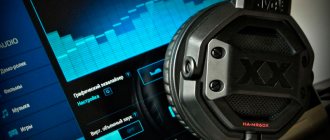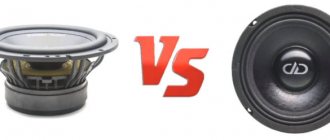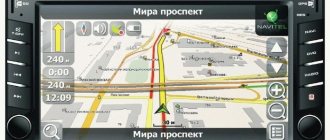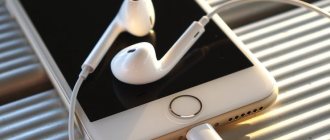Passive and active noise reduction technologies are widely used in both consumer headphones and professional headsets for contact centers and offices. What is the difference between methods of dealing with extraneous noise in headsets, and which noise reduction method is the most effective?
The general term “noise cancellation” refers to several ways to reduce the impact of extraneous noise on the sound quality of headphones and headsets. Manufacturers of these audio devices use different noise reduction technologies - active (with static and adaptive filters), passive, and hybrid. The variety of technologies and terms makes it difficult for users to choose headsets. The purpose of our material is to talk about the basics of noise reduction and compare its different methods.
What is active noise cancellation?
Active Noise Cancellation (ANC) is a process that uses a microphone to monitor ambient noise and filter it out through the headphones.
Active noise reduction is achieved by using analog or digital filters and differs in implementation types - noise reduction with feedback, without feedback, and hybrid. High-quality active noise cancellation technology significantly improves the acoustic performance of headphones and headsets with good passive noise reduction. But it cannot compensate for design flaws or poor ear pad material if the manufacturer decided to save on them.
A typical example of an active noise canceling headset: the Poly Savi W8220 wireless headset
Instead of an epilogue
The question of the usefulness of noise canceling headphones, in my opinion, has a clear answer. If you at least sometimes fly by plane or are in a noisy room, this is definitely a necessary thing. In a busy city life, silence is an extremely valuable substance. Psychologists and doctors say that it is useful and even necessary for health.
But like any overly useful thing, noise-canceling headphones can suddenly turn out to be harmful and dangerous. It was thanks to them that, walking down the street, I once almost got hit by a car, simply without hearing it approaching. Since then, I rarely use any headphones on the go, and use noise-canceling ones only for their intended purpose.
That's all. Be healthy. And enjoy silence as music.
What is passive noise cancellation?
Passive noise reduction is what the design and materials of headphones and headsets imply, be it silicone earbuds for vacuum headphones or soft ear pads for over-ear models. Essentially, this is the level of isolation from external noise that a device can provide on its own, without taking into account electronic components and algorithms. Simply put, this is how well the headphones perform as earplugs.
Good passive noise reduction is, first of all, high-quality materials and well-thought-out design of ear pads. Pictured is the Poly Voyager 8200 UC headset with an advanced passive noise reduction system
PROTECT YOUR EARS
Those who have already read the article about choosing headphones for a big city will remember that noise cancellation can be either active or passive. Let's start with the simpler one - passive. If you use closed-type headphones that fit into your ears quite tightly, you can already get a good level of noise isolation.
Construction earplugs are an excellent standard in terms of noise reduction quality
In the case of in-ear headphones, foam tips will help improve noise isolation. But not all, but only special ones, denser, with increased noise insulation.
Among the silicone nozzles, one cannot fail to mention two- and three-circuit “Christmas trees”. But do not forget that they are not suitable for everyone for physiological and sometimes psychological reasons. To get the effect of Christmas trees, you need to insert them deep enough into the ear canal; In this case, the silicone petals should create at least two noise insulation circuits inside.
A large selection of attachments is not an excess, but a necessity
Classically shaped silicone tips filled with foam or gel can also be very effective. Gel ones are denser and more elastic, but they cause discomfort when worn for a long time if the size does not suit you at least a little.
In general, in the issue of isolating external noise, the correct selection of tips for in-ear headphones plays a key role. In addition to the fact that excessively large and small headphones will not stay in the ears, you need to select their size and shape as accurately as possible. If the headphone manufacturer saved money and did not include a sufficient selection of tips in the kit, find alternative options and take the time to choose the right ones.
The size, shape and material of the tips directly affect the degree of noise reduction
The reward will be not only silence and comfort during long-term wearing, but also cleaner sound with improved depth and richness of the bass range. And the most important thing is that the more effective the attachments are, the fewer reasons there are to increase the volume of the player; the music will be clearly audible anyway. As a result, you will avoid the fate of Brian Johnson and keep your hearing intact.
The essence of the issue: Closed-type in-ear headphones and properly selected tips are an excellent way to get rid of external sounds and protect your hearing from overload with loud music.
Life hack: To avoid getting bored, I suggest buying earplugs at a hardware store and comparing their effect with what in-ear headphones give without music. The role of an external broadband noise generator will be performed by a home stereo system and, for example, a Rammstein disc.
Types of active noise cancellation
As mentioned, there are three types of active noise cancellation: open-loop system, closed-loop system, and hybrid system (a combination of the first two). Open Loop ANC uses the main microphone to detect external noise, then converts it into “anti-noise” and mixes it with the audio being played, thus providing noise cancellation. This process is quite complex, since the phase inversion of complex signals must take into account delays in the passage of noise and calculate the noise protection signal so that it arrives to the user at the same time as the noise.
Adaptive noise reduction relies on the ability of filtering algorithms to identify and adapt to different noise patterns.
Implementing closed-loop ANC is fraught with some difficulties, as designing a system that will always remain stable is quite difficult due to the need to adjust to the size of the headphones, as well as the tendency of the feedback loop to drive the system into excitation.
Feedback requires a microphone on the outside of the headphones that will monitor the sound coming to the user. By comparing the sound coming to the user with the audio source, the feedback algorithm identifies noise and creates protection that helps suppress it.
The closed-loop system is effective mainly for suppressing low frequencies. The reason is that there is a possibility of suppressing part of the desired signal, which can be recognized as noise. This results in coloration or distortion of the original signal.
What is it and how does it work
Active noise cancellation is a way to eliminate unwanted noise by overlaying specially generated sound.
Active noise reduction works as follows. The system captures the noise you want to cancel through an external microphone and emits a sound wave with the same amplitude but a mirror image of the original sound's phase. The noise wave and the generated sound mix and cancel each other out.
This method of dealing with noise when listening to music allows you to abandon complete sound insulation or excessively increase the volume. These two methods were previously actively used to suppress unnecessary sounds.
The first patents in this area began to appear back in the 30s of the twentieth century, but it came to real application only half a century later. Active noise cancellation technology was originally used in the aviation and defense industries. Only a few years ago it entered the consumer market.
Static and adaptive active noise reduction filters
Until recently, manufacturers used only static, non-tunable active noise reduction filters. This universal method means that one filter works for all sound conditions.
Today, ANC uses adaptive or tunable filters that adapt to a person's hearing or headphone configuration, and adapt to changing acoustic environments. This allows the noise reduction function to be improved for a wider range of users.
How ANC works with adaptive filters
Adaptation is more than just filtering out noise. If you analyze the ambient noise, you can note a lot of their varieties, for example, the sound of engines in the cabin of an airplane (low frequencies), conversations in a cafe (medium frequencies), music at a concert (very loud sound) and noise in the library (very quiet sound). In each specific situation, the adaptive filter works to maximize overall noise reduction performance. For example, in an airplane cabin a filter suppresses lower frequencies, and in a cafe it suppresses mid frequencies, etc.
In reality, the adaptation process is more complex, but our description gives a general idea of the capabilities of adaptive filters.
Sound waves
Sound waves behave exactly like waves on water that we are familiar with. What happens when two waves meet from stones thrown into the water? There are two options:
- If the oscillations of the waves coincide, the waves add up, increasing their intensity.
- The second case is the basis for active noise cancellation: the crest of the wave meets the trough of the wave, canceling each other out. For sound waves, this means that: if two sound waves meet at the right moment, they can cancel each other out and silence ensues. In physics this is called destructive interference.
Benefits of Adaptive Noise Canceling
The challenge of developing a high-quality noise reduction solution is that it must be tailored to the anatomical characteristics of the auditory tract of thousands of users.
In its simplest form, active noise reduction is described as inverting noise. In reality, when creating a suppression system, it is necessary to take into account the time it takes for noise to travel from the main microphone to the eardrum. If an ANC system does not model the noise path correctly, the protection it creates will be inaccurate and may even amplify the noise. This is the risk of using generic static filters.
An adaptive filter uses a microphone to control the error, or proportion of noise, in the desired signal, allowing a more accurate simulation of what the user hears. In this way, the system can adapt or adjust the filters to provide better noise protection for that specific user in a specific acoustic environment.
How Poly active noise cancellation works
The advantage of adaptive noise reduction is that it takes into account the unique physiological characteristics of each user. In addition to this, the adaptive solution can monitor actual noise and adjust filters based on noise type to make the suppression as effective as possible.
Until relatively recently, only isolating vacuum or on-ear headphones were equipped with tunable filters to suppress noise. Today, even non-isolating headphones can be equipped with adaptive noise cancellation technologies, as modern algorithms are able to compensate for various distortions resulting from poor passive isolation. Adaptive solutions sound better than closed-loop systems because they do not create unwanted coloration in the sound.
Can noise canceling headphones block out all sound permanently?
Unfortunately, no – at least not yet. They get close to this goal, but because the headphones are not able to automatically create the desired signal, some sounds break through the barrier.
Noise reduction works best when the noise you want to block is low-frequency and constant—for example, from a train car, an airplane engine, or an office air conditioner. Occasional noises such as a dog screaming, barking, or a car horn will still be heard because even the best ANC headphones lack the performance to produce real-time, out-of-phase audio.
Basic Sound Overview
Sound is energy traveling as a wave through some form of matter. We usually hear sound transmitted through the air. For example, a guitar string vibrates in the air, breaking up air molecules. These molecules collide with their neighbors and so on.
When a wave moving through the air hits your eardrums, it moves them at the same frequency as a guitar string. Your brain converts this movement into electrical signals, which you then perceive as sound. This is a very simplified explanation of what sound is.
Noise protection on calls: microphones with filters
If you often have to participate in online conferences, it would be a good idea to take care of the comfort of your interlocutors, because they are also not very interested in listening to your neighbor’s drill. A noise-canceling microphone will help with this.
Most often it works due to... a second microphone! One of the microphones is located closer to the source of the desired sound (that is, to your lips), the other is further away. Both read the surrounding background approximately equally, but the first one captures the useful signal - human speech - much better. The device filters out matching sounds and produces noise-free speech.
If you have a regular headset with one microphone, but for some reason you don’t want to buy a new one, take a closer look at adapters with noise reduction - if you connect the headset through such a device, you will be heard better at the other end of the line. True, such adapters are not very cheap.
How to make an apartment quieter
Replacement of doors and windows
This method is the most effective in eliminating street noise. In order not to hear the sounds of traffic, the voices of people or animals, replace your windows with double or triple glazed windows. Try to purchase high-quality windows from trusted brands so as not to purchase counterfeit ones that will not help you eliminate the problem of excessive noise in your apartment.
There are now soundproofing windows available in the market that will also help you soundproof well. Take advice from relatives and friends or read reviews about products from specific manufacturers before making a choice in favor of a particular one.
When replacing entrance doors, give preference to solid types, and it is best to install double entrance doors. Thus, you can cover one of them with soundproofing material, which is an additional means of soundproofing the apartment. Don't forget to also seal the threshold around the entire perimeter. This way you can protect your home from extraneous sounds coming from the entrance.
Soundproofing walls
This method will help to significantly reduce the sounds coming from neighboring apartments. First of all, you need to eliminate all cracks and cracks, even the most insignificant ones, since they are excellent conductors of extraneous sounds. However, this stage is only a preparatory stage before performing direct soundproofing of the walls, which may include:
- Self-adhesive membranes, which create a physical barrier to extraneous sounds, are a fairly thin, but at the same time durable fabric that can be applied to various wall coverings and in any type of room. The material is very easy to use and install, and does not require the use of additional tools. Due to its thinness, it is perfect for small spaces, as it does not take up space when applied to walls.
- Combined slabs consisting of mineral or synthetic materials, or panels equipped with a layer of sound-absorbing material. Their use requires preliminary installation of a special metal frame. Installing this type of sound insulation requires special skills and tools. It is worth noting that such materials occupy a much larger area of the room than soundproofing membranes.
It is recommended to combine the wall soundproofing options described above to achieve maximum results in getting rid of extraneous noise in the apartment.
Ceiling soundproofing
Sounds coming from the ceiling from neighbors are the loudest noise. That is why mandatory sound insulation of the flow in combination with sound insulation of the walls is necessary. In this case, it is worth giving preference to materials that are as light as possible so that they do not peel off under the weight of their own weight. However, given the volume of noise penetrating into the apartment through the ceiling, it is worth noting that in order to effectively absorb it, the use of sufficiently dense materials is required, which are attached to the ceiling using frame structures. This is also due to safety measures, as it prevents the fall of materials attached to the ceiling surface.
The most popular board materials for soundproofing ceilings are multilayer cardboard and quartz sand, which have a fairly large mass. For this reason, they are attached to a metal frame pre-installed on the ceiling using self-tapping screws. Fastening to the frame is also due to the fact that when installing the slabs directly on the ceiling using dowels, you will have to make holes in the ceiling itself, the presence of which can only aggravate the situation with noise coming from outside.
Getting rid of noise in the apartment using improvised means
As it became clear from the above material, in order to provide resistance to sounds penetrating into the apartment from outside, it is necessary to increase the thickness of the walls. So, this can be done using cabinet furniture placed close to the walls. These could be closets with clothes or shelves with books.
A large number of textiles in the apartment will also help combat noise. Carpets, carpet, thick curtains and curtains on the windows, soft headboards - all this will help you not only create comfort in your home, but also eliminate unwanted extraneous sounds in the apartment.
Electronic jammers
Our musical tastes do not always coincide with the tastes of our neighbors. Loud music or a screaming TV is the bane of many apartment buildings. If one likes it, everyone listens. And if the neighbors are also karaoke fans, the problem becomes even more acute. Alas, unfortunately, these “musical” people do not always adequately respond to requests to “turn it down.” Well, if you can’t come to an “amicable” agreement, and your nerves are already on edge, you have to take radical measures. And for this it is not necessary to involve law enforcement agencies.
You can either purchase such a device or make it yourself. On the Internet you can find a lot of diagrams, following which you can make these electronic jammers. The schemes can be either simple or quite complex, but the principle of their operation is essentially the same.
What determines the degree of noise absorption
The ability of sound suppressors to effectively eliminate sound vibrations depends on several factors that must be taken into account when installing this equipment:
- From the size of the device. The standard sizes that this device has can be 60 cm, 90 cm and 1m 20 cm./
- On the thickness and location of the soundproofing layer.
- From the speed of air movement. The best performance in eliminating aerodynamic sound vibrations is shown at low air flow speeds.
- From the location of the noise suppression device. The closer it is located to the fan, the better the sound insulation in the air ducts.











